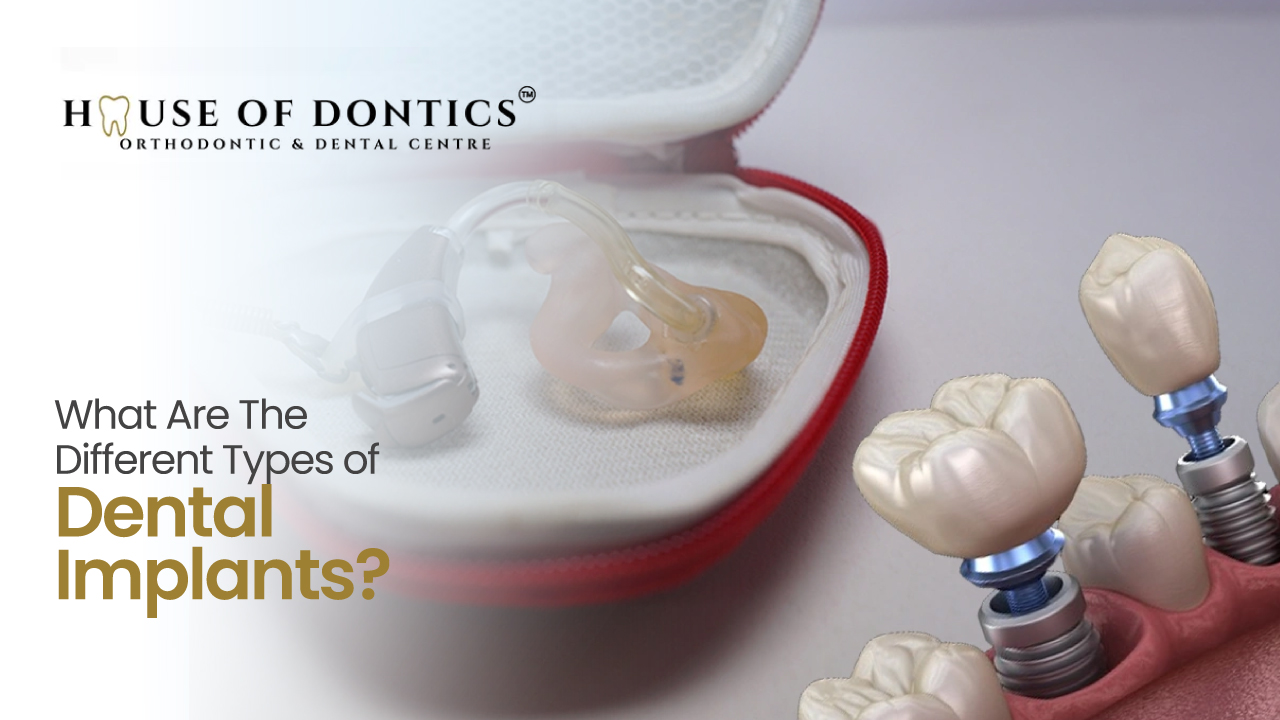Losing a tooth (or teeth) can really mess with your confidence and make simple tasks like eating or smiling feel uncomfortable. This is where the House of Dontics for Dental Implants in Ahmedabad walks in. They’re the superheroes of contemporary dentistry, strong, dependable and built to withstand the test of time.
But get this—when it comes to dental implants, they’re not all the same. There are different types of dental implants, but the ideal one for you will depend on some factors, including the amount of bone you have, your oral health, and even your personal preferences.
So, if you’re considering implants or just want to know what your options are, stay with us. We explain it all in a super-easy way.

1. Endosteal Implants
Let’s begin with the most popular in the dental world: endosteal implants.
And these are the ones that most people picture when they hear the term dental implant. They resemble tiny screws and are constructed of titanium. These implants are inserted into your jawbone to play the role of artificial roots for your new teeth.
Who is it for?
People who have a normal, healthy jawbone. You will need enough bones to hold the screw.
How it works:
After the implant is placed, you’ll wait a few months, long enough for the bone to heal around it (a process known as osseointegration). A crown (your new tooth) is then fitted over it. That is a new tooth, a tooth in which you can’t even feel that it’s fake.
2. Subperiosteal Implants
Now, if your jawbone isn’t thick enough or you just don’t want to go through bone grafting, subperiosteal implants might be your go-to.
Instead of being placed inside the bone, these implants sit on top of the jawbone but underneath the gum tissue. They come with a metal frame that holds the posts in place, and your dentist will mount the crown onto those posts once everything has healed.
Who is it for?
People with shallow jawbones who don’t want to (or can’t) go for bone graft surgery.
Fun fact:
These used to be more popular before endosteal implants took the spotlight, but they’re still a solid option for the right candidate.
3. Zygomatic Implants
Okay, this one’s a bit different, and honestly, not for everyone. Zygomatic implants are used when there isn’t enough bone in the upper jaw. Instead of placing the implant in the jawbone, the dentist anchors it in the cheekbone (zygomatic bone). Sounds intense, right? It is a bit more complicated than the usual types, and it requires a skilled specialist to get the job done right.
Who is it for?
Patients with severe bone loss in the upper jaw who can’t undergo bone grafting.
Heads-up:
This procedure isn’t done everywhere, and it usually takes a more experienced oral surgeon to pull it off.
4. All-on-4 Implants
This method uses just four implants (sometimes 6, depending on the case) to support a full arch of replacement teeth. It’s kind of a game-changer for people who’ve lost most or all of their teeth.
Who is it for?
People are looking for a full-mouth restoration without getting individual implants for each missing tooth.
Why it rocks:
Faster recovery, fewer implants, and you get to walk out with a full smile the same day. What’s not to love?
5. Mini Dental Implants
Don’t let the name fool you, mini dental implants may be smaller, but they still pack a punch. They’re usually used to stabilise lower dentures or for replacing smaller teeth like incisors. The best part? The procedure is less invasive, which means faster healing and often less discomfort.
Who is it for?
Patients who can’t undergo traditional implant surgery or those looking for a more budget-friendly option.
Bonus point:
Since they’re smaller, there’s less drilling and often no need for bone grafts.
So, Which One’s Right for You?
Honestly, there’s no one-size-fits-all when it comes to dental implants. The right types of dental implants depend on your oral health, bone density, budget, and what you’re hoping to achieve.
That’s why it’s super important to chat with your dentist or oral surgeon before choosing the types of dental implants. They’ll take X-rays, do an exam, and help figure out what type of implant suits your smile best.
Dental implants at House of Dontics can seriously change your life. They don’t just look good—they feel natural, help maintain your jawbone, and let you enjoy your favourite foods without stress. Whether you need one tooth fixed or a full set replaced, there’s an implant option out there for you.
So, if you've been holding off, maybe it's time to take that first step. Your future smile is worth it.
